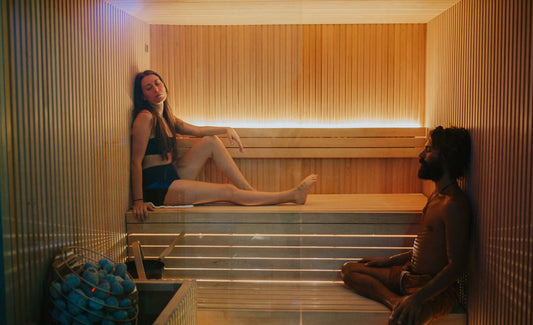
Shirts have evolved significantly over the years, with one noticeable trend being their increasing length. This shift in design is not merely a matter of fashion; it encompasses a range of practical, cultural, and aesthetic considerations. In this article, we will explore the reasons behind the longer lengths of shirts, examining aspects such as style trends, functionality, cultural influences, and practical considerations.
Understanding the Trend of Longer Shirts
Longer shirts have become a prominent feature in contemporary fashion. This trend can be observed across various types of shirts, from casual tees to formal dress shirts. The extended length serves multiple purposes, enhancing both functionality and style.
Style and Fashion Trends
1.1. Evolution of Fashion
Fashion trends often cycle through periods of change, and longer shirts are a manifestation of the current evolution. Historically, shirts were designed to fit closer to the body and end at the waist or just below. However, as fashion evolved, designers experimented with different proportions, leading to longer shirt styles that now dominate the market.
1.2. Influence of Streetwear and Casual Styles
The rise of streetwear and casual fashion has significantly influenced the length of shirts. Streetwear often embraces oversized and relaxed fits, which naturally include longer shirts. This style emphasizes comfort and a laid-back attitude, and longer shirts align with these values by providing a more relaxed and flowing silhouette.
1.3. Layering and Styling Versatility
Longer shirts offer greater versatility in styling. They are often used for layering purposes, where a longer shirt peeks out from under a shorter jacket or sweater, creating a visually appealing and trendy look. This layering technique adds depth and dimension to an outfit, making longer shirts a popular choice among fashion enthusiasts.
Functionality and Comfort
2.1. Coverage and Protection
One of the primary reasons for the increased length of shirts is the added coverage and protection they provide. Longer shirts can offer additional coverage for the back and lower torso, which is particularly useful in various activities. For instance, during physical activities or work, longer shirts prevent exposure and provide a more secure fit.
2.2. Comfort and Fit
Longer shirts contribute to overall comfort by allowing for more movement and a relaxed fit. This design choice accommodates different body types and personal preferences, providing a more comfortable experience for the wearer. The extended length also helps in maintaining a neat and tidy appearance, as it reduces the likelihood of the shirt coming untucked or shifting out of place.
2.3. Versatility in Wear
Longer shirts are versatile and can be styled in numerous ways. They can be worn tucked in or left out, depending on the desired look. This flexibility allows individuals to adapt their outfits to different occasions, whether it's a casual day out or a more formal setting. The ability to adjust the shirt's length and fit according to personal preference makes it a practical choice for many.
Cultural and Social Influences
3.1. Changing Gender Norms
The design and length of shirts have also been influenced by changing gender norms and fashion inclusivity. Longer shirts have been embraced by both men and women, reflecting a shift towards gender-neutral and inclusive fashion. This evolution in style allows for greater self-expression and challenges traditional gender-specific clothing norms.
3.2. Impact of Pop Culture
Pop culture has a significant impact on fashion trends, including the length of shirts. Celebrities, influencers, and media personalities often set trends that are quickly adopted by the public. The popularity of longer shirts can be attributed to their frequent appearance in music videos, television shows, and social media platforms, where they are often showcased as part of trendy and fashionable looks.
3.3. Global Fashion Influences
The global nature of fashion means that trends can cross borders and influence styles worldwide. Longer shirts have become a global trend, with various cultures incorporating this style into their fashion repertoire. This cross-cultural exchange has led to a diverse range of shirt lengths and designs, reflecting a broader acceptance and adaptation of fashion trends.

Practical Considerations
4.1. Fabric and Material Choices
The length of a shirt is often determined by the type of fabric and material used. Certain fabrics, such as lightweight cotton or linen, are more suited to longer shirt designs, as they drape well and provide a comfortable fit. Additionally, the choice of fabric can affect the overall length and style of the shirt, making it important for designers to consider material properties when creating longer shirts.
4.2. Tailoring and Customization
Tailoring and customization play a role in the length of shirts, allowing for personalized fits and styles. Many people opt for custom-made or tailored shirts to achieve their desired length and fit. This customization ensures that the shirt meets individual preferences and body measurements, providing a more personalized and comfortable experience.
4.3. Functional Aspects
Longer shirts can also have practical functional benefits. For instance, in certain professions or activities, a longer shirt can provide additional protection and coverage. In work environments where movement is frequent, a longer shirt helps in maintaining a polished appearance and prevents the shirt from becoming untucked or disheveled.
Environmental and Economic Considerations
5.1. Sustainability and Fabric Choices
The length of shirts can be influenced by sustainability considerations. Longer shirts may be made from eco-friendly materials, such as organic cotton or recycled fibers, which contribute to reducing environmental impact. The choice of sustainable fabrics aligns with broader trends towards environmentally conscious fashion and promotes a more responsible approach to clothing production.
5.2. Cost and Production Factors
The production cost of longer shirts can vary based on design complexity and fabric choice. Longer shirts may require more material, which can impact production costs. However, the increased popularity of longer shirts has led to economies of scale, making them more affordable and accessible to a wider audience.
Choosing the Right Shirt Length
6.1. Personal Style and Preference
Choosing the right shirt length depends on personal style and preference. Some individuals prefer the classic fit of shorter shirts, while others embrace the contemporary look of longer shirts. Personal style plays a significant role in determining which shirt length is most suitable, and experimenting with different lengths can help in finding the most flattering and comfortable option.
6.2. Occasion and Purpose
The length of a shirt should also be chosen based on the occasion and purpose. For formal events, a shirt with a traditional length may be more appropriate, while casual settings may allow for longer shirts. Understanding the context and purpose of wearing the shirt can help in selecting the right length and style.
The Future of Shirt Lengths
7.1. Innovations and Trends
The future of shirt lengths will likely see continued innovation and adaptation to evolving fashion trends. Advances in fabric technology and design techniques may lead to new styles and lengths that cater to diverse preferences and needs. The ongoing experimentation with shirt lengths reflects the dynamic nature of fashion and the continuous search for new and exciting trends.
7.2. Education and Awareness
As fashion evolves, education and awareness about shirt lengths and styles become increasingly important. Understanding the factors that influence shirt design and length can help individuals make informed choices about their clothing. Greater awareness of fashion trends and practical considerations ensures that people can select shirts that align with their personal style and functional needs.
Conclusion
The trend towards longer shirts is a multifaceted phenomenon influenced by style trends, functionality, cultural factors, and practical considerations. Longer shirts offer increased coverage, comfort, and versatility, reflecting contemporary fashion preferences and evolving gender norms. As fashion continues to evolve, the length of shirts will likely adapt to new trends and innovations, providing a range of options for personal expression and practicality. Understanding the reasons behind the increased length of shirts helps in appreciating their significance in modern fashion and highlights the importance of considering style, comfort, and functionality when selecting clothing.


